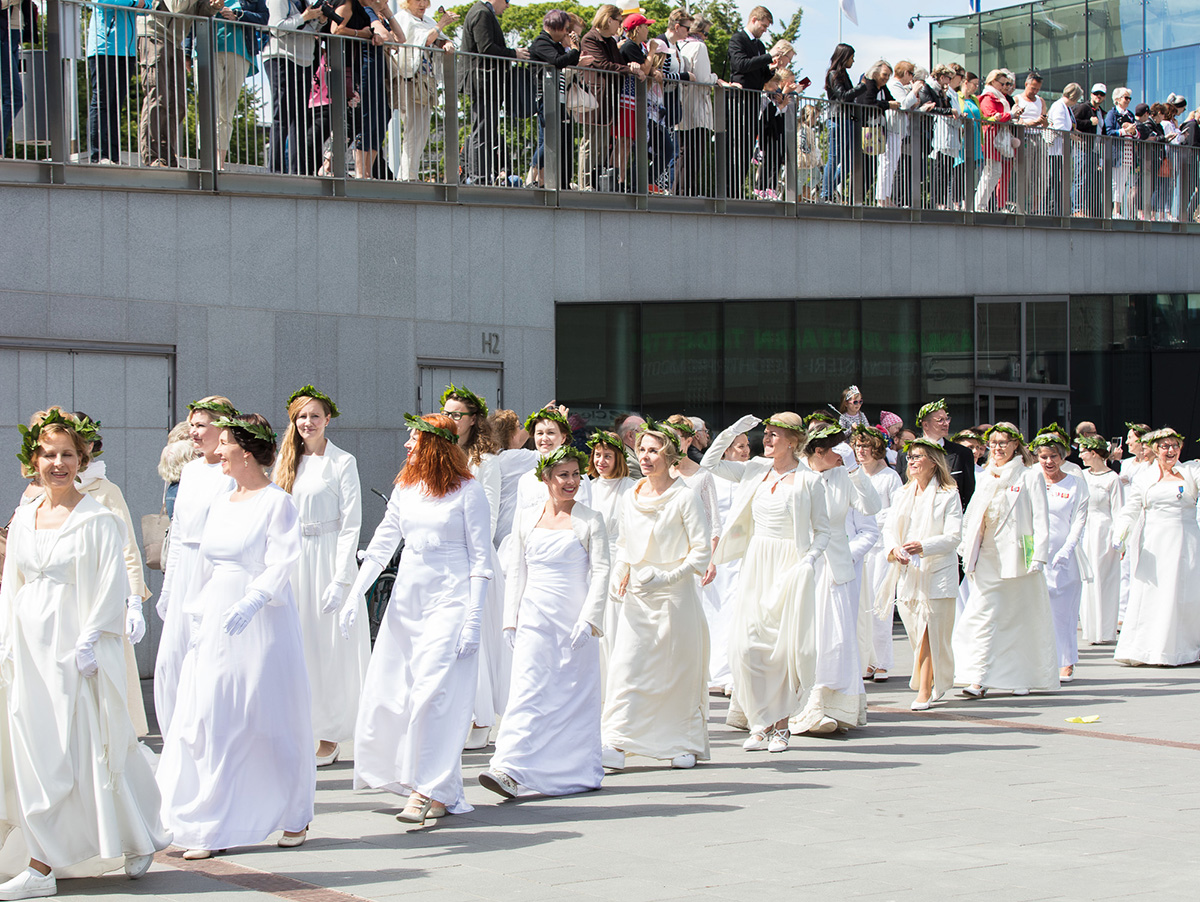History of the conferment tradition
In Finland, the first conferment ceremony for masters took place at the Royal Academy of Turku in 1643, three years after the academy was founded.

The first conferment of a doctoral degree took place in 1648 in the field of theology. It was not until 1828 when Doctor of Philosophy took part in the conferment ceremony for the first time. Until then, a bachelor’s degree was the highest academic degree in philosophy.
A thousand-year tradition
The history of conferment ceremonies dates back to about a thousand years ago when the first universities began celebrating the awarding of academic titles. The festive conferment traditions in Finland have largely remained unchanged: The conferrer gives a speech, and the primus master and the primus doctor selected from among the conferred masters and doctors answer to questions that are presented to them. The conferment participants are given their academic insignia, which in masters’ case is a laurel wreath, a ring and a diploma, and in doctors’ case a doctoral hat, a sword and a diploma.
An important and visually striking part of the festivities is the procession to a church service that follows the conferment act, and the conferment dinner, ball and excursion are also essential to the event. Conferment poetry has also played a significant role in the traditions over the years, first blooming in Latin, then in Swedish and later in Finnish.
A celebration of youth
Even though the conferment is, first and foremost, a celebration of conferring academic degrees in a dignified and elegant atmosphere, it is also a celebration of youth and and event that can include fun elements and the chance to form life-long acquaintanceships.
Major national celebrations
During the first half of the 19th century, conferment ceremonies were major national celebrations. Political ideologies put their own spin on conferment events, which were used as a tool for promoting political agendas. The language strife was a major cause of tension at one point in history, and it was reflected on conferment events, as well. Even though nowadays it is hard to picture conferment celebrations as a tumultuous playground for political ends, it is still a major display of national traditions.